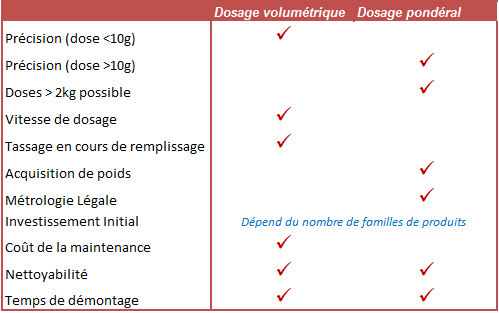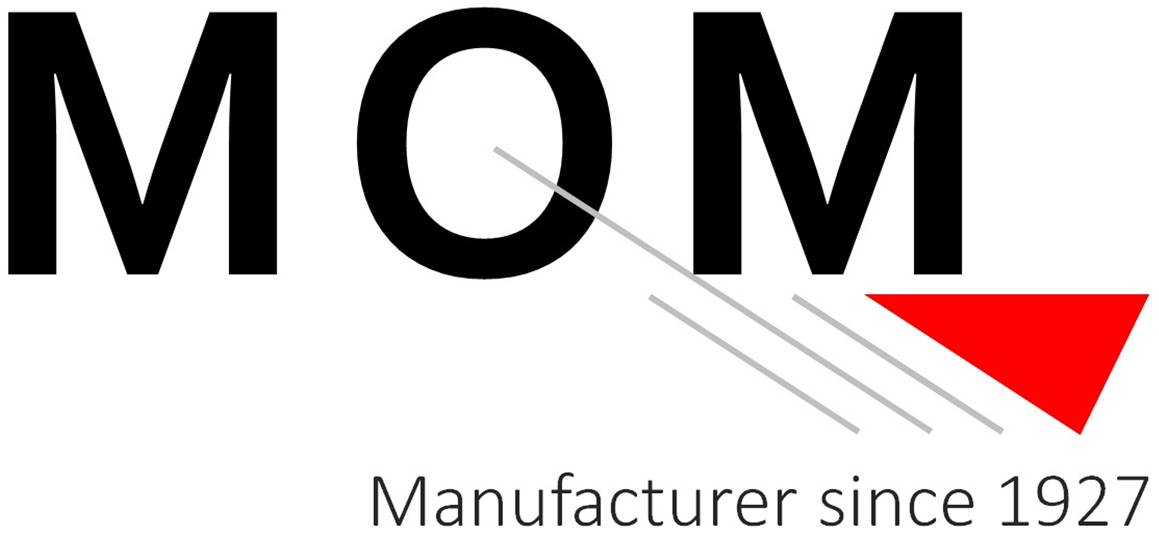How to choose between volumetric or weight dosing for your powders and grains
Dosing dry products with a vertical screw is adapted to filling a wide range of powders or grains, with a high precision and care for your product (please see here for more details on dosing your powder products).There are two methods for dosing with a vertical screw: volumetric or weight dosing. As with liquid products, there is not one unique technology that works for all of your applications: one must choose the technology best suited to their product and to their specifications.
Volumetric dosing for powders is done by counting the number of turns of the screw (or eventually by chronometry). In order to be as precise as possible, it is necessary to:
– Have a constant level of product in the hopper.
– Have a tooling adapted to your product for the flow of product to be regular.
Volumetric dosing is often well suited for doses under 1kg. Working only for high speed doses, this technology is faster than weight dosing. Depending on the number of products you need to dose, volumetric dosing can be more or less economic than weight dosing (which requires an electronic measurement system). Manufacturers think that, from 2kg doses (depending on the density of the product), volumetric dosing is less precise in absolute value and they tend to prefer weight dosing for such doses.
One of the main advantages of volumetric dosing is that it can pack or even compress your product during the filling without losing its precision (for example, when dosing talcum powder). Packing a dry product when weight dosing can be more complicated as the vibrations can undermine the electronics.
When dosing powders, the cycle can be broken down into two phases. During the first phase, the speed of the rotation of the screw is high in order to quickly fill the packaging. Once the target weight is almost reached, the rotation speed is lessened to get as a precise dosing as possible. Under a couple of grams, weight dosing is a delicate matter as precision can be altered by the machine’s environment. Above a couple of grams, weight dosing becomes more and more precise and allows you to register gross and net weightings and thus to monitor your production and improve quality. Getting the same kind of information with volumetric dosing can be expensive: you would need to weigh before and after each filling. Weight dosing can require fewer toolings than volumetric dosing: the lack of precision caused by an inhomogeneous repartition of product in the screw will only have an impact on the product queue at the end of the dosing. It is your specifications and the variations between your different products that will allow manufacturers to determine the number of optimal toolings for your project.
One of the main advantages of weight dosing is its use under legal metrology. Both a sign of quality as well as a business case, legal metrology requires for the manufacturer to submit an accreditation application to the National Laboratory of Trials or another organism, and for this application to have been instructed and validated (please see here for more details on legal metrology).
When it comes to cleanability and dismantling time, both methods, volumetric or weight dosing, are equivalent. Some manufacturers have a true competitive advantage in this area.

Find all articles by the Dosing Experts here
